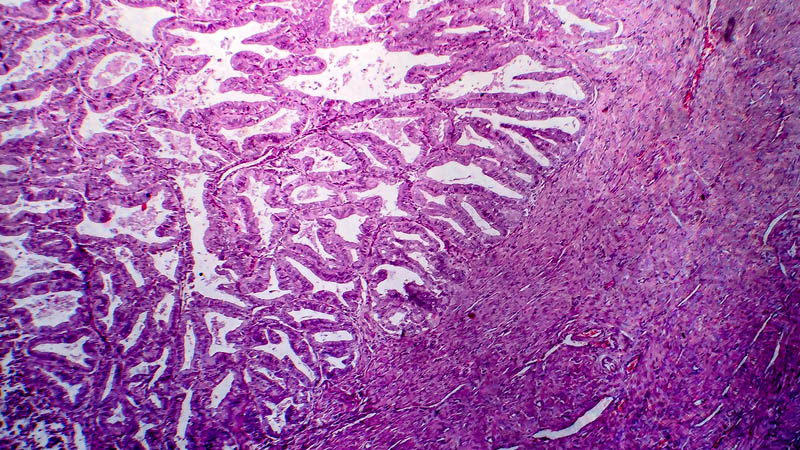Uterine sarcoma in young women – analysis of 17 cases
Anita Olejek1, Jacek Zamłyński1, Sylwia Jędruś2, Sylwia Kellas-Ślęczka1,3, Agnieszka Jurek1, Krzysztof Piękoś1
 Affiliacja i adres do korespondencji
Affiliacja i adres do korespondencjiUterine sarcoma are characterized by aggressive clinical course, poor prognosis and early development of metastases. According to various authors, they constitute 1-5% of all malignant uterine neoplasms. Already in clinical stage I, uterine sarcomas may produce metastases to pelvic lymph nodes in about 30% of the cases and to periaortal lymph nodes – in about 15%. Uterine sarcomas are particularly noteworthy because of limited experience in their management and lack of generally accepted diagnostic criteria and effective therapy. Preoperative diagnosis is possible in about 30% of the patients undergoing uterine cavity curettage. The treatment of choice of uterine sarcoma is radical surgery. The aim of this paper was clinical analysis of 17 patients aged 24-43, operated on for uterine sarcoma at the Department of Gynaecology, Obstetrics and Oncological Gynaecology of the Silesian Medical University in Bytom, Poland, since 2002 thru 2006. Analysed variables included: patients’ age, type and severity of ailments preceding diagnosis of uterine sarcoma, histopathologic diagnosis, type of surgical and adjuvant treatment implemented, treatment outcome and postoperative course. Microscopic examination of surgical specimens revealed leiomyosarcoma (47%), stromal sarcoma (29.4%) and less often necrotising leiomyosarcoma (11.8%), necrotising fibrosarcoma (5.9%) and undifferentiated sarcoma (5.9%). Upon completion of surgical treatment, all patients were referred for adjuvant treatment at the Department of Oncological Gynaecology of the Institute of Oncology in Gliwice, Poland.









